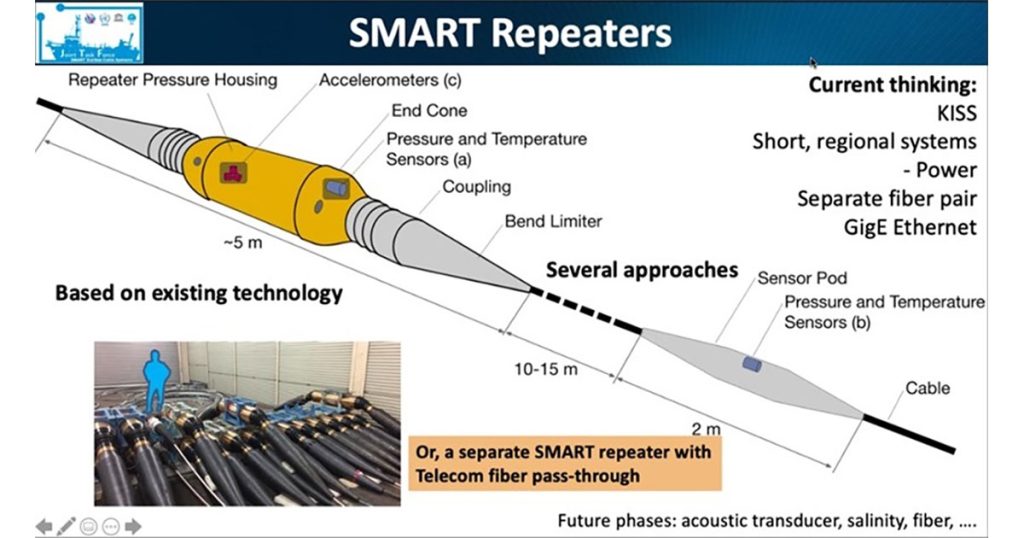On June 30, Steve Lentz, Director of Network System Science and Engineering, Ocean Specialists Inc. (OSI) gave a presentation at a Total Telecom webinar entitled, Building the Submarine Networks of the Future with SMART Cables.
SMART stands for Science Monitoring and Reliable Telecommunications. The basic idea is to combine submarine telecom cables and ocean sensing for ocean and climate monitoring and disaster warning by embedding sensors in the repeaters of commercial submarine fiber optic cables. Simultaneous with these cables transmitting Internet traffic, the sensors would be collecting scientific data on the ocean.
Mr. Lentz is Co-Chair Engineering of the SMART Cables Joint Task Force, which was set up in 2012 by three UN agencies – the International Telecommunications Union, the World Meteorological Organization and the UNESCO Intergovernmental Oceanographic Commission – to bring this concept to fruition.
The image below is a representation of a repeater, showing what needs to be incorporated into it to give it SMART capability. The accelerometers for earthquake detection would go inside the repeater housing, along with some additional circuit boards to collect and transmit data.
The pressure and temperature sensors obviously need to be exposed to the environment. There are two possible mounting points for those. The first is on the end of the repeater housing, under the end cone. This is shown on the image as Option (a).
The other possibility is to move those sensors away from the repeater. This could be done by creating a “sensor pod,” which could be made by using two bend limiters back-to-back, with the sensors encapsulated in the rubber protection. This sensor pod would be located some distance from the repeater (Option (b) in the image).
There is a benefit of moving the sensors away from the repeater. The temperature sensor is trying to detect very small changes in temperature, but the repeater itself generates some heat. Separating the sensors from the repeater would prevent the sensor from recording the heat from the repeater and thus provide a truer temperature reading.
In the early days of this concept, we anticipate using a separate fiber pair for transmission of the sensor data. This is to avoid any complications of integrating with the fiber pairs that are carrying telecom traffic. We hope eventually to evolve to perhaps a WDM or an out-of-band signal so that we can share a fiber pair and not use up as many resources in the cable system.
Given this, the first set of cable systems using the SMART technology would ideally be regional cables that would be viable with two or three fiber pairs for telecom traffic. Then the fourth pair would support SMART. After that, we can start to look at higher fiber count systems. Right now, we’re trying to walk before we run.
